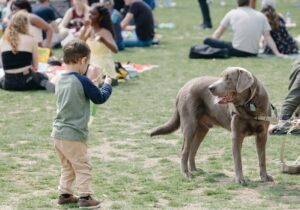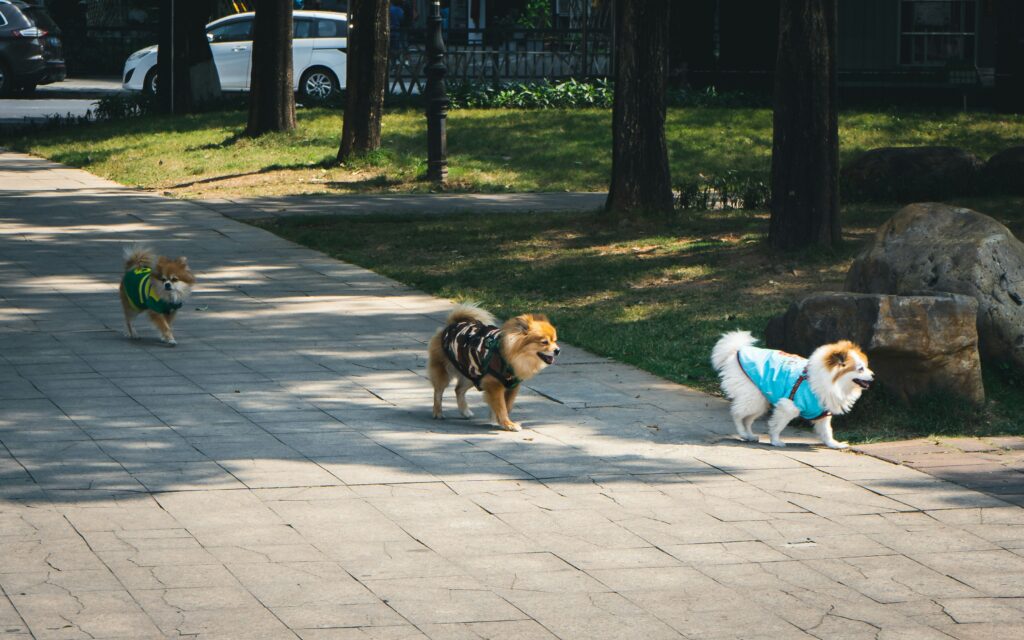Socializing Adult Dogs: It’s Not Too Late
Many dog owners assume that if a dog wasn’t properly socialized as a puppy, the opportunity is lost forever. The truth is, while early socialization is ideal, it’s absolutely possible to help adult dogs—whether newly adopted, rescued, or long-time family pets—become more confident and socially capable.
Whether you have a shy adult dog, a fearful rescue, or a pup that missed those crucial early experiences, socialization can still be part of their story. With time, patience, and a gentle approach, you can help your adult dog navigate the world with less fear and more trust.
Why Adult Dogs Miss Out on Socialization
There are many reasons a dog may reach adulthood without proper social skills:
-
They grew up in a rural or isolated environment
-
They came from a neglectful or abusive background
-
They were adopted later in life
-
They experienced traumatic events that created fear
-
Their early life lacked positive human or canine interaction
Whatever the reason, it’s never a reflection of the dog’s worth or intelligence. It just means they’ll need some extra guidance to build the confidence they didn’t develop as a pup.
Signs Your Adult Dog Needs Socialization
Dogs lacking social experience often exhibit behaviors such as:
-
Barking or growling at strangers or unfamiliar dogs
-
Cowering, shaking, or trying to hide in new environments
-
Refusing to walk on certain surfaces or enter new spaces
-
Overexcitement that’s hard to manage around people or animals
-
Hypervigilance, leash reactivity, or refusal to engage
These behaviors are often rooted in fear and uncertainty, not aggression or stubbornness.
The Benefits of Socializing Adult Dogs
 While it may take longer than with a puppy, socializing an adult dog can bring enormous rewards:
While it may take longer than with a puppy, socializing an adult dog can bring enormous rewards:
-
Improved behavior and calmness in public
-
Easier vet visits and grooming appointments
-
Stronger bond and communication with you
-
Greater confidence in everyday life
-
Reduced fear, anxiety, and reactivity
-
More freedom and opportunities for fun
Socialization can be a life-changing journey for both you and your dog.
Step-by-Step Guide to Socializing an Adult Dog
1. Start With Safe, Calm Environments
Avoid chaotic or high-traffic areas. Begin in places where your dog can observe the world from a distance—like a quiet park or low-traffic street. Let them take in the sights and sounds without feeling pressured.
2. Use Positive Reinforcement
Bring plenty of treats and praise. Reward your dog for calm behavior, curiosity, or even just tolerating a new situation. Positive associations are the key to building confidence.
3. Go at Their Pace
One of the most important things to remember is: don’t rush. Your dog might need weeks or months to feel comfortable in certain settings. Forcing interaction can increase anxiety or cause regression.
4. Introduce New People Gradually
Start with calm, dog-savvy individuals. Have them ignore the dog at first, allowing your dog to approach when ready. Avoid eye contact or reaching over the dog’s head—these can be perceived as threats.
5. Use Parallel Walking With Other Dogs
When introducing other dogs, consider side-by-side walks at a safe distance. This allows your dog to feel the presence of another dog without the pressure of face-to-face interaction. Gradually decrease the distance as comfort grows.
6. Build Tolerance for New Environments
Help your dog adjust to various settings like sidewalks, elevators, vet clinics, and pet-friendly stores. Start slow—just standing near the door or walking past can be a great first step.
7. Incorporate Enrichment at Home
Food puzzles, scent games, and basic training exercises can help reduce stress and increase engagement. A mentally stimulated dog is more emotionally balanced and more receptive to new experiences.
Common Mistakes to Avoid
-
Flooding Your Dog With Too Much Too Soon: Overwhelming your dog can increase fear instead of building tolerance.
-
Ignoring Their Signals: Watch for signs of stress like lip licking, yawning, panting, or looking away. Respect their limits.
-
Assuming All Dogs Want to Be Social: Not every dog is destined to be a social butterfly, and that’s okay. The goal is calm tolerance, not forced friendliness.
-
Punishing Fearful Reactions: Fear should never be corrected with harsh discipline—it only reinforces the belief that the world is unsafe.
When to Seek Professional Help
If your dog has a history of trauma or exhibits intense reactivity, working with a certified dog trainer or behaviorist can be a game-changer. They can guide you in structured, safe socialization and help modify fear-based behavior in a compassionate way.
Success Takes Time, But It’s Worth It
Helping an adult dog gain social skills may take longer than training a puppy—but the transformation can be remarkable. As your dog learns to explore the world with less fear and more trust, you’ll see their true personality shine through.
They may start to look forward to walks, greet visitors without panic, or relax in places that once felt overwhelming. Every small win is a major milestone.
Final Thoughts
It’s never too late to help a dog grow. Adult dogs are capable of learning, adapting, and becoming more confident—especially when guided with patience, love, and positive reinforcement.
Whether your dog is timid, reactive, or simply inexperienced, your effort to socialize them is an investment in their happiness and well-being. With your help, they can experience the world not as something to fear, but as something to enjoy.


